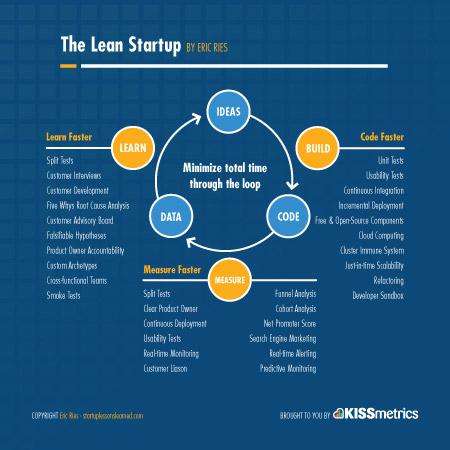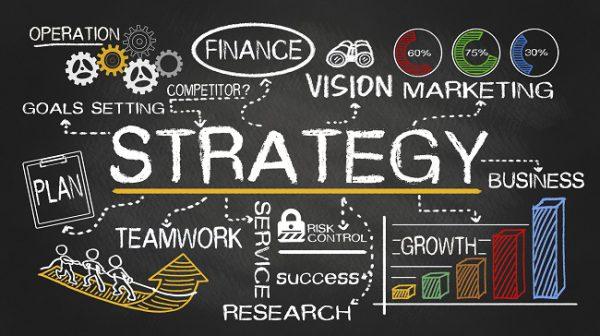In today’s fast-paced business landscape, the ability to adapt and innovate is more critical than ever. Companies are constantly seeking ways to streamline their processes and optimize resource allocation in order to maintain a competitive edge. One proven approach that has gained traction in recent years is the Lean Startup methodology. Originally developed to enhance the success rates of startups navigating the uncertain waters of new product development, this systematic approach emphasizes learning through rapid experimentation, customer feedback, and iterative design. As organizations of all sizes strive to maximize efficiency while minimizing waste, understanding and implementing Lean Startup principles has become indispensable. This article delves into the crucial role of Lean Startup methodology in fostering agility and efficiency, providing insights on how businesses can harness its core tenets to drive sustainable growth and achieve their strategic objectives.
Table of Contents
- Understanding Lean Startup Principles for Enhanced Operational Efficiency
- Implementing Iterative Testing to Minimize Risks and Optimize Resources
- Cultivating a Customer-Centric Approach to Drive Innovation and Market Fit
- Leveraging Agile Methodologies to Foster Continuous Improvement and Adaptability
- Wrapping Up
Understanding Lean Startup Principles for Enhanced Operational Efficiency
At the core of Lean Startup methodology is the principle of validated learning, which emphasizes the need to test hypotheses and learn from real customer feedback rather than relying solely on assumptions. This iterative process allows startups to invest resources in what truly matters, thereby enhancing operational efficiency. By focusing on creating a minimum viable product (MVP), businesses can quickly gather insights into customer preferences and behaviors, enabling them to pivot or iterate faster in response to market demands. Key components of this methodology include:
- Build-Measure-Learn Cycle: Quickly build a prototype, measure its impact, and learn from the results.
- Customer Development: Engage with customers early and often for feedback.
- Innovation Accounting: Use metrics that matter to track progress and make informed decisions.
Embracing this approach leads to a culture of continuous improvement within organizations, where every team member is encouraged to challenge the status quo and seek more efficient pathways. Additionally, Lean Startup principles advocate for reducing waste in all forms—be it time, resources, or processes—ensuring that every activity contributes to the overarching goal of delivering value to the customer. Below is a summary of the primary advantages of integrating these principles into operational frameworks:
| Advantage | Description |
|---|---|
| Enhanced Agility | Ability to adapt quickly to market changes. |
| Cost Effectiveness | Minimized waste leads to reduced operational costs. |
| Customer-Centric Focus | Decisions driven by customer needs and feedback. |
Implementing Iterative Testing to Minimize Risks and Optimize Resources
To effectively mitigate risks and make the best use of available resources, implementing a strategy of iterative testing is essential. This approach allows teams to develop products and services incrementally, relying on real-time feedback to guide decision-making. By focusing on learning through experimentation, businesses can identify potential pitfalls early in the process, significantly reducing the costs associated with late-stage changes. Key benefits include:
- Early Detection of Issues: Continuous feedback loops highlight problems before they escalate.
- Resource Allocation: Effective prioritization of tasks ensures that time and funding are spent on high-impact activities.
- Customer-Centric Development: Engaging users in the testing phase leads to more accurate product-market fit.
Additionally, the use of a structured iterative framework can simplify the management of various project components. By employing methods like Agile or the Build-Measure-Learn cycle, teams can explicitly outline their goals and align them with business objectives. A simplified overview of the iterative process might look like this:
| Phase | Activity | Outcome |
|---|---|---|
| 1. Build | Create a minimum viable product (MVP). | Initial user feedback. |
| 2. Measure | Collect data on user interactions. | Insights into user behavior. |
| 3. Learn | Analyze data and pivot or persevere. | Refined product features. |
Cultivating a Customer-Centric Approach to Drive Innovation and Market Fit
To foster a more effective and innovative environment, organizations must prioritize the needs and preferences of their customers. By adopting a customer-centric mindset, companies can effectively translate consumer feedback into actionable insights, creating products and services that better meet market demand. Key strategies include:
- Active Listening: Engage customers through surveys, interviews, and social media to grasp their experiences and desires.
- Iterative Prototyping: Develop prototypes based on customer feedback and test them rigorously to refine offerings.
- Cross-Functional Collaboration: Encourage collaboration across departments to ensure that customer insights are integrated into all stages of development.
By embedding the voice of the customer into the innovation process, businesses not only improve their product-market fit but also bolster their competitive edge. Embracing this approach leads to a deeper understanding of customer pain points, enabling teams to pivot quickly and effectively. Consider the following benefits of a customer-centric focus:
| Benefit | Description |
|---|---|
| Enhanced Customer Loyalty | By delivering products that resonate with customers, businesses cultivate lasting relationships. |
| Accelerated Innovation | Continuous customer engagement fuels faster iterations and adaptations of ideas. |
| Informed Decision-Making | Data-driven insights from customer feedback lead to strategic, market-aligned choices. |
Leveraging Agile Methodologies to Foster Continuous Improvement and Adaptability
In an era where market conditions can shift overnight, organizations must embrace methodologies that promote flexibility and responsiveness. Leveraging principles of Agile allows teams to operate in iterative cycles, fostering an environment where continuous improvement is not just encouraged but ingrained in the company culture. By focusing on short sprints and frequent feedback loops, businesses can prioritize customer value, ensuring that each iteration aligns closely with user needs. This results in a proactive approach to change management, where teams can pivot quickly based on real-time data and insights.
Implementing Agile practices also enhances collaboration across departments, breaking down silos that often impede progress. Key components of this approach include:
- Cross-functional Teams: Empowering diverse skill sets to contribute actively to the development process.
- Regular Stand-ups: Daily meetings that cultivate transparency and accountability among team members.
- Retrospectives: Reflective sessions that allow teams to evaluate successes and areas for growth.
| Agile Aspect | Benefit |
|---|---|
| Flexibility | Adapt quickly to market changes |
| Customer Feedback | Ensure products meet user expectations |
| Collaboration | Enhances team synergy and innovation |
Wrapping Up
the Lean Startup methodology offers a robust framework for organizations aiming to maximize efficiency and foster innovation in today’s dynamic business environment. By emphasizing validated learning, rapid iteration, and customer feedback, companies can significantly reduce the risks associated with product development and market entry. This approach not only streamlines operations but also cultivates a culture of adaptability and responsiveness, essential traits for success in an increasingly competitive landscape.
As we navigate the complexities of modern entrepreneurship, embracing the principles of Lean Startup can empower teams to make informed decisions, allocate resources more effectively, and ultimately deliver greater value to customers. By adopting this methodology, businesses position themselves to not only survive but thrive, turning challenges into opportunities for growth and sustainability.
In a world where change is the only constant, the Lean Startup methodology stands out as a powerful ally for entrepreneurs and established companies alike, paving the way for smarter, more efficient operations that can propel success in the long term. Let us take these insights to heart and lead our organizations toward a leaner, more resilient future.







The emphasis on Lean Startup methodology and its focus on iterative testing and customer feedback is indeed vital for businesses aiming to stay agile and efficient. Speaking of optimizing decisions, for those considering the impact of HRT on weight, this comprehensive guide is worth exploring: https://ways2well.com/blog/will-i-lose-weight-if-i-stop-hrt-deep-overview-with-ways2well. It provides valuable insights into the topic, helping individuals make informed health choices based on real data and expert advice.